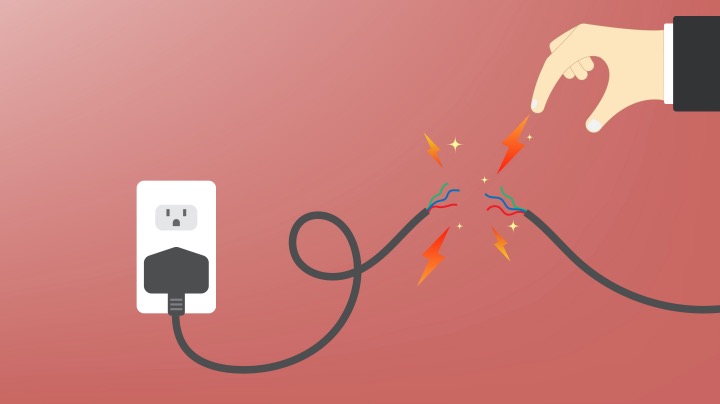Streamline efficiency with specialized mechanical system optimisation support.
Streamline efficiency with specialized mechanical system optimisation support.
Blog Article
Top Tips for Effective Electrical System Troubleshooting
Troubleshooting electric systems calls for a systematic method, grounded in a detailed understanding of electrical principles and security methods. The subtleties of reliable troubleshooting prolong beyond simple technical understanding; understanding exactly how to record findings and focus on safety and security can dramatically influence results.
Understand the Fundamentals
Comprehending the essentials of electrical systems is important for efficient troubleshooting, as a solid structure permits service technicians to detect and fix issues extra efficiently. A detailed grasp of electric principles, such as voltage, present, resistance, and power, is essential in recognizing the source of troubles. Voltage is the electrical potential distinction that drives current through a circuit, while resistance opposes the flow of current, influencing the overall capability of the system.
Experience with circuit parts, consisting of resistors, capacitors, diodes, and switches over, is additionally paramount. Each part plays an unique role in circuit habits and can affect efficiency when malfunctioning. In addition, comprehending series and parallel circuit setups is crucial, as these setups affect the circulation of voltage and present within the system.
Furthermore, knowledge of safety and security protocols is indispensable. Specialists should recognize prospective threats, such as shock and brief circuits, to execute secure troubleshooting techniques. By mastering these foundational concepts, technicians improve their capability to perform efficient diagnostics and repair services, inevitably bring about boosted efficiency and dependability of electric systems. This foundational understanding is the cornerstone of effective troubleshooting endeavors.
Gather Necessary Equipment
Effective troubleshooting of electric systems requires the ideal set of devices to detect and fix concerns properly. A well-appointed technician can considerably enhance performance and efficiency in recognizing troubles. Essential devices consist of a multimeter, which gauges voltage, current, and resistance, enabling specific evaluations of electrical components. Clamp meters are likewise beneficial for measuring existing without disconnecting the circuit, making sure safety and security and convenience.
In addition, protected hand devices such as screwdrivers, pliers, and cable strippers are essential for securely controling electrical links. It is also recommended to have a circuit tester available to validate the presence of voltage in electrical outlets and wires. For more facility systems, a thermal imaging video camera can aid spot overheating elements, indicating potential failures.

Comply With a Systematic Technique
Having actually collected the proper devices, the following step in troubleshooting electrical systems is to comply with an organized technique. A systematic method makes certain that technicians can determine faults efficiently and precisely, minimizing downtime and avoiding unnecessary repair work.
Begin by examining the system's schematic layouts and specifications. This entails monitoring each element methodically, beginning from the power source and functioning in the direction of the load.
Make use of screening equipment, such as multimeters and oscilloscopes, to gather objective data regarding voltage, present, and resistance at numerous points within the system. This empirical proof will certainly lead your troubleshooting initiatives and help to verify or get rid of prospective sources of failure.
Additionally, think about environmental factors that might influence the system's performance, such as temperature changes or dampness ingress. A comprehensive inspection of wiring, connections, and components will make sure that all possibilities are made up.
Document Your Findings
Extensive documents is necessary in the repairing procedure of electrical systems. Precise documents boost the performance of determining persisting problems and facilitate communication amongst employee. Each searching for must be thoroughly kept in mind, including signs and symptoms observed, examinations carried out, and the end results of those examinations. electrical system troubleshooting. This technique not just aids in recognizing the source of the issue but also her latest blog offers as a reference for future repairing efforts.

In addition, maintaining a log of components changed or fixings done is invaluable. This details supports inventory monitoring and can assist evaluate the long life and integrity of specific elements.
Ultimately, the documents procedure need to be detailed yet concise, enabling very easy retrieval and review - electrical system troubleshooting. By prioritizing in-depth documents, technicians can create an important data base that not just help in existing troubleshooting but additionally equips future upkeep efforts, thereby enhancing total system reliability

Prioritize Precaution
Recognizing the intrinsic dangers linked with electrical systems is important for ensuring security throughout troubleshooting. Electrical shock, burns, and tools damages are just a few of the prospective dangers that technicians encounter. Prioritizing precaution is click reference not just a legal responsibility yet also a moral imperative that safeguards both the specialist and the surrounding atmosphere.
Prior to beginning any troubleshooting task, service technicians need to put on proper personal protective equipment (PPE), consisting of protected handwear covers, safety and security glasses, and flame-resistant clothes. Making sure that the workspace is completely dry and devoid of clutter can dramatically lower the danger of accidents. In addition, it is crucial to de-energize circuits before beginning any job, verifying that they are not live via using a multimeter or voltage tester.
Establishing clear interaction procedures with employee is additionally important; this guarantees that everybody knows prospective hazards and the standing of the electrical system being serviced. Lastly, having an emergency situation action plan in position can confirm very useful in the occasion of an event. By focusing on security procedures, service technicians can efficiently alleviate risks and promote a more secure workplace.
Final Thought
Efficient electric system repairing relies upon an extensive understanding of fundamental principles and a methodical method. By gathering essential tools, adhering to systematic evaluation methods, and thoroughly documenting findings, the troubleshooting procedure ends up being more reliable and trusted. Prioritizing precaution makes sure the wellness of people included and the stability of the electric system. Executing these strategies will enhance the troubleshooting experience, resulting in quicker resolutions and improved functional effectiveness in electric systems.
Report this page